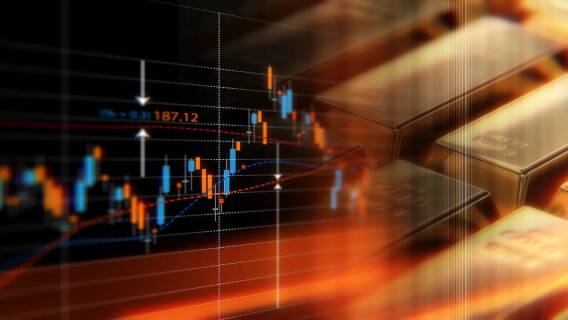Gold has been on an incredible run this year, up more than 56% in 2025 alone, which has made it a point of focus for investors who might not normally consider themselves “gold bugs.”
And while investing in precious metals like gold and silver isn’t suitable for all investors, for those who do choose to buy metals and resources, there are some good strategies to help you manage both your risks and expenses, whether you’re buying precious metals mutual funds, ETFs, individual companies or even physical gold.
One such strategy is using stocks or funds instead of holding physical assets directly. If you’re investing in precious metals, you have both liquidity concerns (harder to buy and sell) and storage concerns (how do you keep your metals both accessible and secure?) that can be partially addressed by trading securities instead.
Gold is particularly susceptible to these risks as a relatively small amount of physical gold is worth a lot of money. In fact, as of earlier this year, even a $100 bill isn’t worth its weight in gold.
[text_ad]
Investing in Precious Metals Through Stocks, Mutual Funds, and ETFs
As an alternative to holding physical gold or silver, some investors will directly target individual stocks of companies that mine for or sell precious metals. But individual miners are more heavily leveraged to the overall business environment and can easily out- (or under-) perform the value of the metal they mine.
Individual companies are subject to individual company-specific risks, and that flies in the face of what most precious metals investors are after, namely, security.
If you want to invest in precious metals without taking such a big risk, target a precious metals ETF or mutual fund instead of investing directly in a mining company.
Most mutual funds or ETFs will have less volatility and more diversification. Both mutual funds and ETFs include numerous holdings. Some actively managed mutual funds invest in a portfolio of equities and investments selected by the fund manager based on the fund’s stated strategy, while most ETFs are more passively managed and hold a basket of stocks that follow a specific index.
Since mutual funds and ETFs both include multiple holdings, they are more diversified than individual mining stocks (with some exceptions, notably the funds that hold physical assets, which we’ll discuss in more detail below). This can help decrease the overall risk of these resource investments.
Investing in a Precious Metals ETF Can Save You Money Compared to a Mutual Fund
Many mutual funds are actively managed investments, while most traditional ETFs are passively managed. This makes a significant difference, especially in the cost to investors. Mutual funds generally have a higher management expense ratio (MER) than ETFs, making mutual funds more expensive to hold.
The lower management fees of ETFs can make it less costly to buy ETFs vs. mutual funds. However, it is important to select the precious metals ETFs that actually have lower expense ratios than comparable funds. There are active and tactically managed funds with higher expense ratios that rival the rates associated with mutual funds. To get the most out of your ETF investing, make sure you choose ETFs with low expenses, strong diversification and high liquidity.
An example of a precious metals ETF that has strong diversification throughout the global economy is the iShares MSCI Global Gold Miners Index ETF (RING). This is one option for a passively managed investment with lower management fees that focuses on the gold mining market. Global X Silver Miners ETF (SIL) is similar in its global diversification, but it follows the silver mining industry. And both offer expense ratios below those of comparable mutual funds.
You should also keep in mind that there are closed-end funds that trade like ETFs but represent a stake in vaulted precious metals like the Sprott Physical Gold Trust (PHYS), the SPDR Gold Trust (GLD) or the Sprott Physical Silver Trust (PSLV). These funds offer similar liquidity to ETFs or mutual funds that own miners or other companies but offer you a portfolio backed by physical metals holdings, which can help ensure the performance tracks the underlying metal closely.
[author_ad]
*This post is periodically updated to reflect market conditions.

